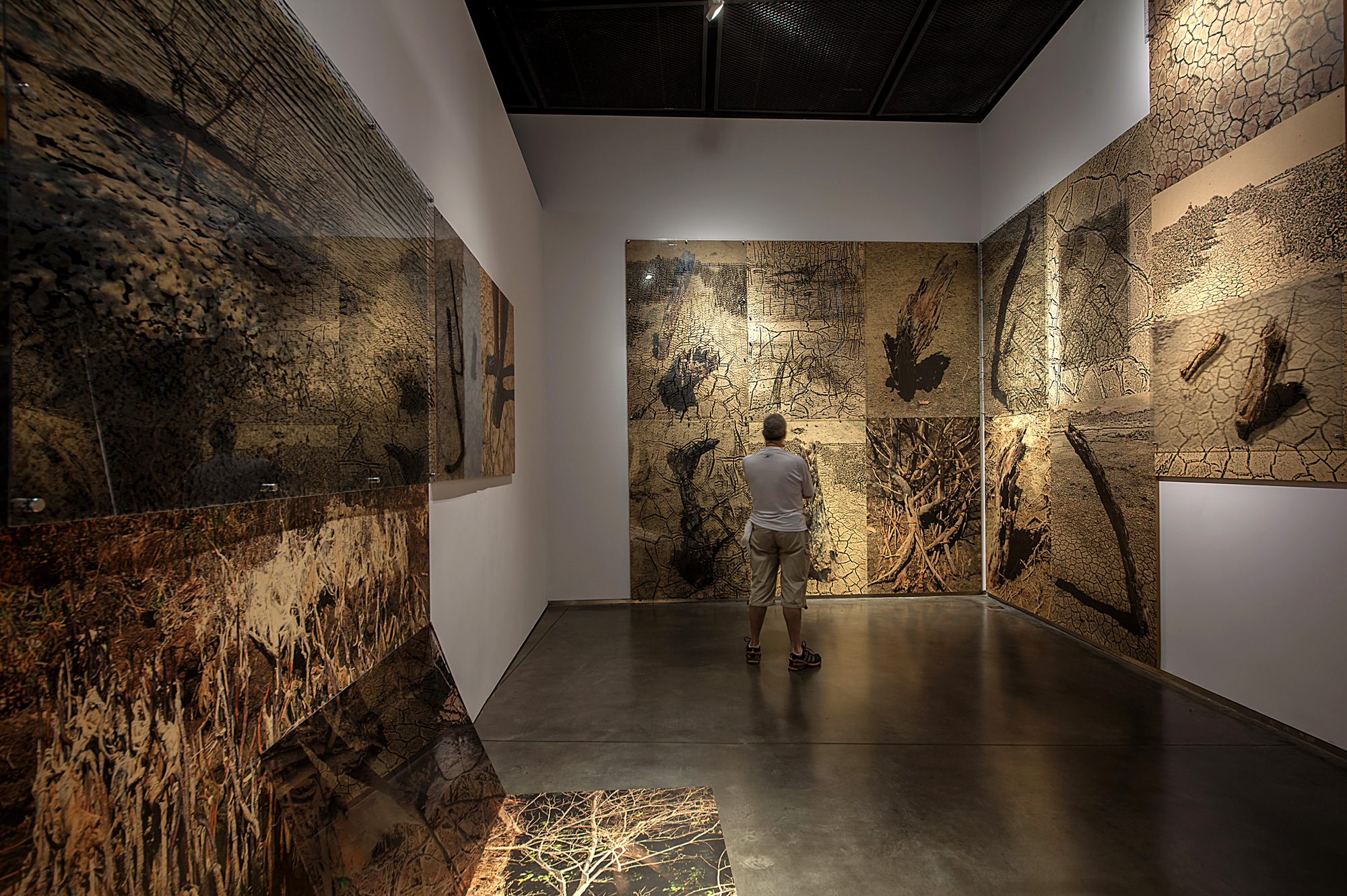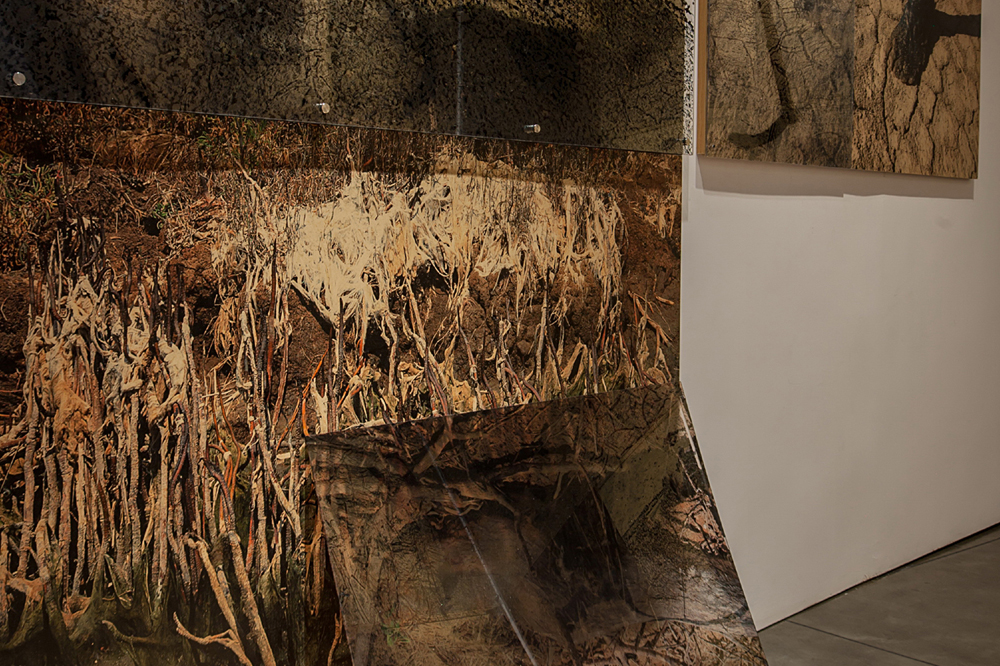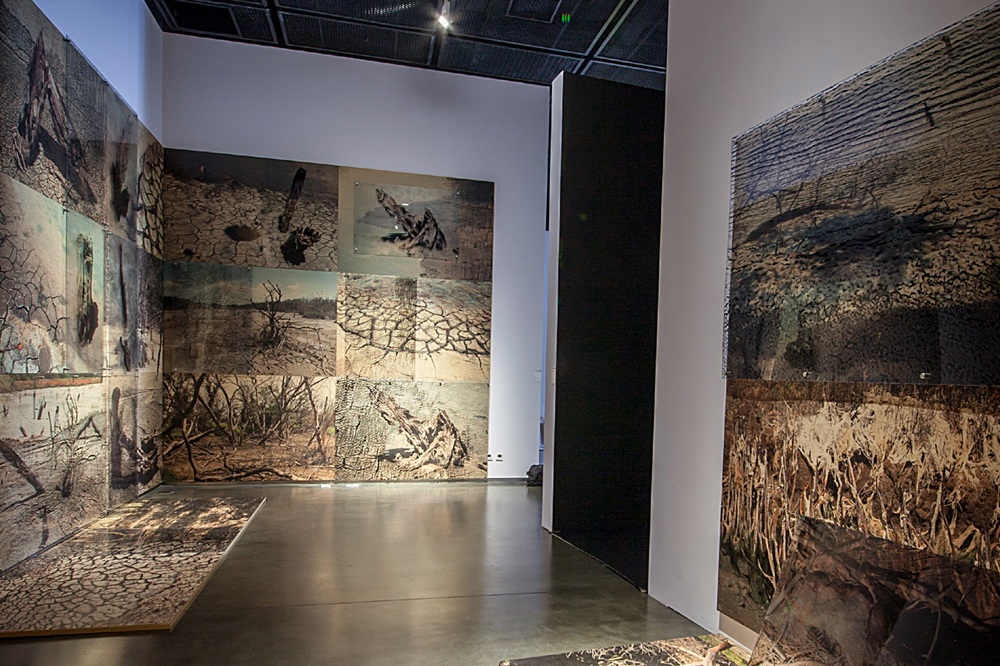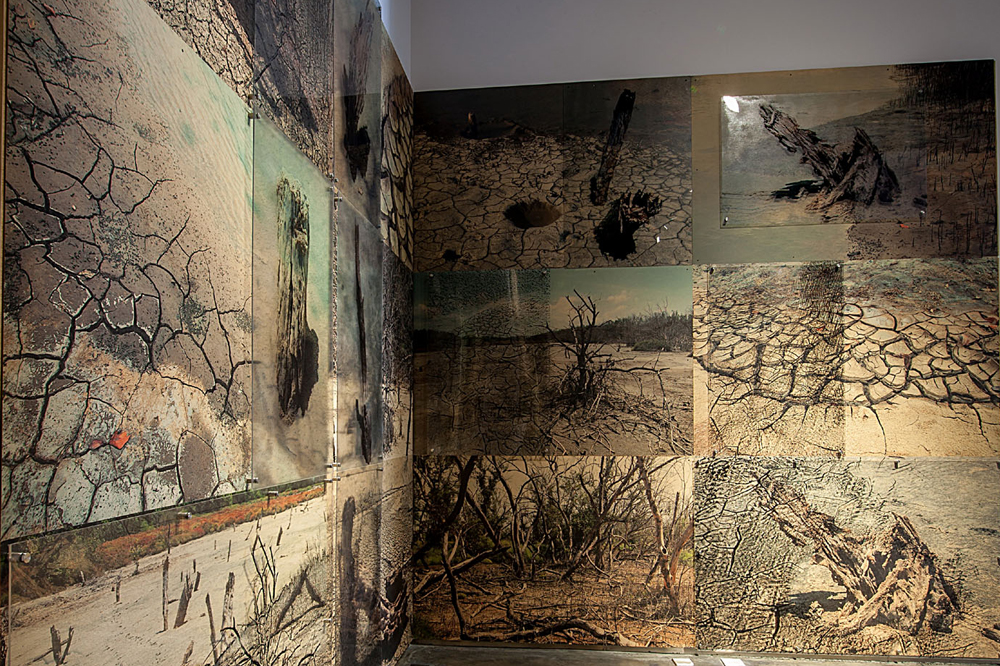

|
RESIDUE IMMERSIVE INSTALLATION SERIGRAPHY, UV PRINTS AND DRAWING ON WOOD AND LAYERED PLEXIGLASS DIMENSIONS: 144 INCHES X 1080 INCHES 2016 PREVIEW: YINCHUAN BIENNALE 2016, CURATED BY BOSE KRISHNAMACHARI |
|
 | |
|
The mangroves provide a preview of the challenges ahead for ecosystems and biodiversity hotspots across the planet. Documented extensively in degraded mangrove belts across India, these decaying ecosystems speak volumes about a living vicious cycle of depredation that is the tale of 21st century globalization. Shrouded in an uncanny silence, the haunting images capture the melancholia of a life come to an end. The crumbling, mouldering and decaying forms await inundation. The landscapes speak chronicles of past histories, politics, the environment and economics of consumption. Masked in a profound and unfathomable stillness, are they merely residues of past histories or are they markers of a dystopian nightmare and an apocalyptic vision of times to come? The work becomes a site for contemplation and reflection, a ground where the mind stops between uncertainties. "The artist's immersive setting is constructed by hanging groups of large serigraphs and UV prints from the ceiling down to the floor. The viewer is surrounded by images of devastated mangrove forests that are traditionally home to a thriving community of varied species on the southeastern Indian coastline. Dark wooden stumps that look burned and parched dot the landscape. In her video, dead branches intertwined with stagnant weeds fill the marshland. The eerie forests, denuded by contaminated seawater from urban waste, and devoid of birds or any form of life, stand testament to a serious problem. By covering many of the serigraphs with acrylic plexiglass on which she draws, Chawla creates the illusion of a built up surface and three-dimensionality. It's perceived proximity creates the effect of immediacy and draws the viewer in. One is strangely captivated by Chawla's images of the vast, dry, diamond shaped cracked earth on which the mangroves used to grow. But unlike the Canadian photographer Edward Burtynsky's breathtaking aerial images of ravished landscapes, Chawla walks a fine line between environmental ethics and aesthetics. In her work, she transforms the spectral condition of a fallow uninhabitable landscape. Pieces of wood resemble organic sculpture, and the dried split up ground evokes a mosaic floor from a previous civilization. Yet at no point does one forget the purpose of her endeavor. Chawla's intention to bring the calamitous mangrove depletion to one's attention is paramount to her work. Hours of research with the MS Swaminathan Research Foundation in Chennai, and time spent with local people are evident from the ways in which the direst conditions are portrayed. One of the themes of the biennale is to draw attention to the cyclical nature of life. Birth, death, and rebirth of all living things have sustained communities for centuries. The success of Chawla's work lies in her ability to bring a sense of urgency to a disrupted natural order brought on by human defilement of the environment. As a consequence, she hopes to expose the danger of pollution, and hasten the implementation of new research to grow saplings that will survive in the current poor conditions of the Indian coastline." (Project review by Bansie Vaswani for Aesthetica, the British Art and Culture Magazine, September 2016) Read full article here: http://www.aestheticamagazine.com/yinchuan-biennale-2016/ | |
 |
 |
 |
||
 |
 |
 |
||
 |
 |
 |
||
 |
 |
 |
||
 |
||||
| Visit to Yinchuan Biennale Site | ||||
| Visit to Sonia Mehre Chawla's Page (Yinchuan Biennale Site) | ||||